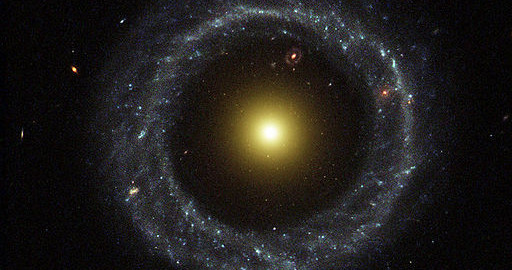Written By: Ran Levi
This article is a part of a series named ‘Astronomy Shorts’, which brings bite-sized interesting and easy to understand facts and anecdotes about our universe and solar system.
More Astronomy Shorts and Astronomy-related topics
This article is a transcript of a podcast. Listen to the podcast:
Subscribe: iTunes | Android App | RSS link | Facebook | Twitter
Explore episodes in other categories:
Astronomy & Space | Biology & Genetics | History | Information Technology | Medicine & Physiology | Physics | Technology
A journey to outer space has many dangers and challenges; but for those courageous astronauts, the trip might be worthwhile. Some of the planets and moons in the Solar System have views that are really, but really, out of this world.
Caloris Basin
From Earth, is it difficult to see many details of planet Mercury. It is also difficult to send spacecraft to Mercury, because as the craft falls towards the Sun it gains speed – and breaking up becomes an issue. That is why only two spacecraft have been sent to Mercury so far.
When Mariner 10 passed by Mercury in 1974, astronomers got their first glimpse of the planet. One of the big surprises revealed in the photos was “Caloris Basin” – a large crater, about nine hundred and sixty miles in diameter (the size of about one-third of the United States). The circumference of Mercury, by the way, is only about 15000 miles, or about 3 times as big as the U.S. On the other side of Mercury, right at the opposite point from the crater’s center, an area of shattered rocks, faults, and other geological phenomena were found, suggesting that some geological impact took place there. This area was therefore named “the Chaotic Terrain”. It is probable to assume that the Chaotic Terrain was created when seismic waves moved along the planet after the impact that created the crater and met at the antipode where they left behind a beautiful ruin.
Iapetus Equatorial Ridge
Iapetus is one of Saturn’s moons. It was discovered in 1671 by astronomer Giovanni Cassini, who noticed a strange thing about it: While half of the moon was very dark, the other half was extraordinarily bright. In 2005 the Cassini spacecraft (named after the astronomer) passed by Iapetus, confirmed the discovery and revealed another – even stranger – characteristic: a mountainous ridge surrounds the small moon by its equator, just like a long belt. The length of this mountain ridge is about eight hundred miles, and its average height is eight miles.
Scientists are now able to explain the difference in brightness between the two halves. One side of Iapetus is constantly turned away from Saturn, allowing discharged matter from one of the distant moons of Saturn to accumulate and create dark layers. White ice accumulates on the other half of the moon, reflecting the incoming light and making it brighter. Yet no one can explain Iapetus’s unique mountain ridge. It is possible it was created when the moon was younger and was spinning faster around its axis – or perhaps ice that came from within the moon pushed the ground upwards. The little data we have is not enough to find a convincing answer to this mystery; all we can do is speculate…
Miranda – A Crazy Moon
Miranda, a moon of Uranus, was never at the center of attention for astronomers. It is small (having a diameter of two hundred and ninety-two miles) and frozen, so no one expected any fascinating geological activity to occur on it.
But when the Voyager 2 spacecraft passed by Miranda on its way to Neptune, its cameras snapped a few photos of the forsaken moon. the photos revealed a strange world, unlike anything seen before. There was a jigsaw puzzle of rocks and geological formations that are not supposed to exist next to each other. The amazed astronomers saw canyons that are more than twelve miles deep, pieces of rock breaking through the ground at illogical angles, forming a crazy conglomerate of old and new rocks.
The first theories assumed that in its beginning Miranda was crushed, time after time, by random clashes with larger bodies. Nowadays, scientists believe that ice, hidden within the moon, became warmer and turned to liquid – perhaps due to the tidal influence of Uranus. During this process, the ice flooded the surface, pushed the ground and stretched it, causing the strange geological appearances.
